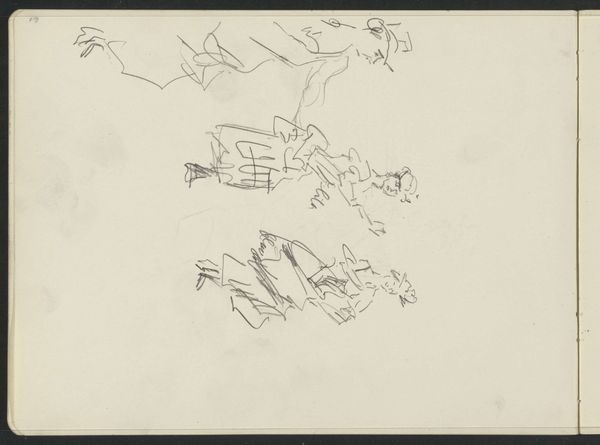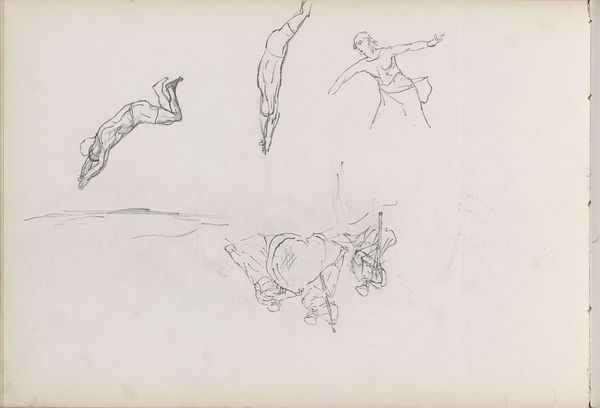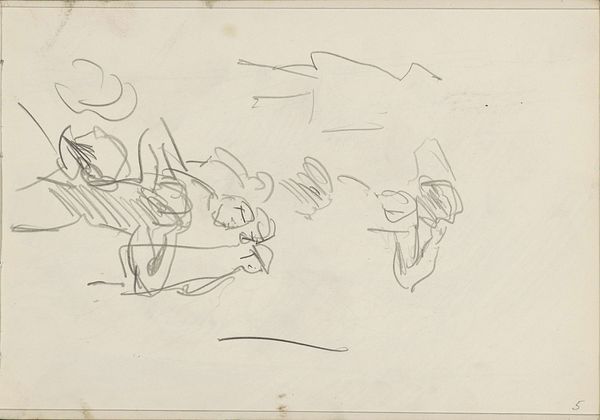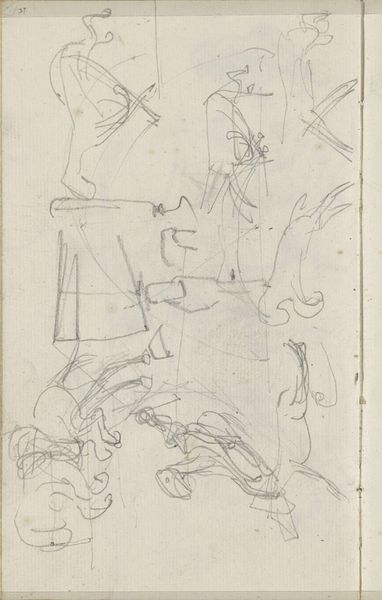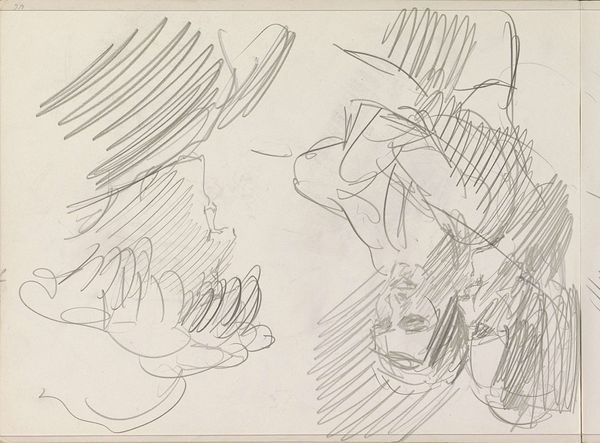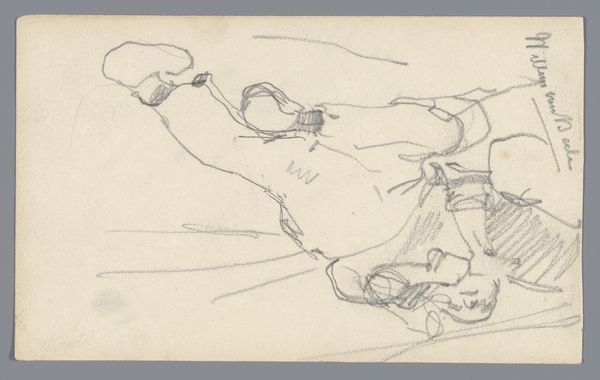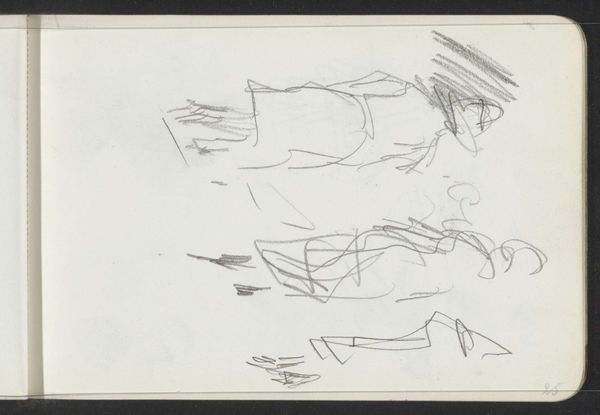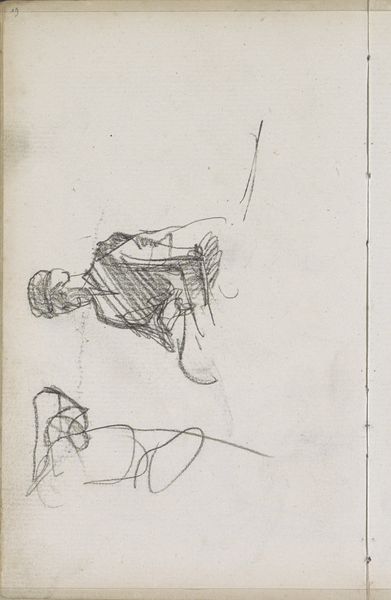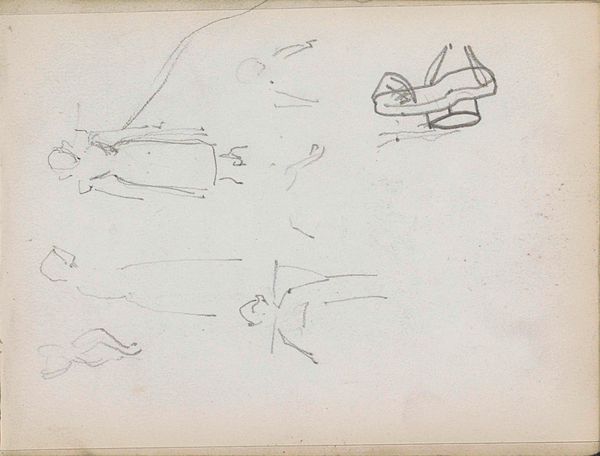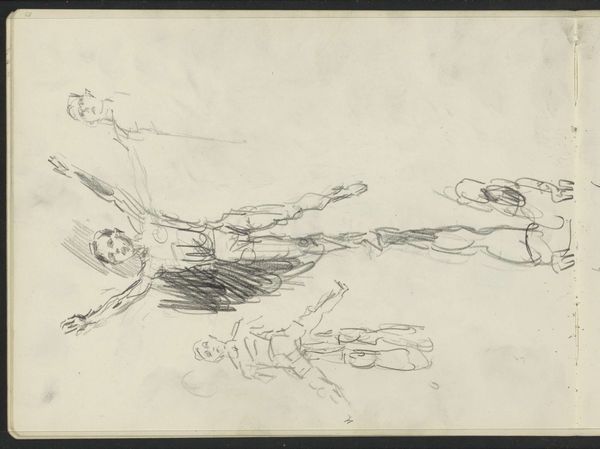
drawing, pencil
#
portrait
#
drawing
#
quirky sketch
#
pen sketch
#
figuration
#
personal sketchbook
#
idea generation sketch
#
sketchwork
#
ink drawing experimentation
#
sketch
#
pen-ink sketch
#
pencil
#
line
#
sketchbook drawing
#
sketchbook art
#
initial sketch
Copyright: Rijks Museum: Open Domain
Curator: Here at the Rijksmuseum, we have a drawing by Isaac Israels entitled "Figuren in een kring, mogelijk dansend," or "Figures in a Circle, Possibly Dancing," from around 1930-1934. Editor: It strikes me as frantic, almost nervously rendered, and that rawness gives it a distinct energy, wouldn't you say? A glimpse into his process, maybe? Curator: Absolutely. Israels was known for capturing fleeting moments, and this sketch beautifully encapsulates that. Notice how the figures seem to be caught in mid-motion, with the pencil lines themselves suggesting movement and rhythm. What is the impact of the medium of graphite on paper here, how does that affect how we view the supposed circle of figures? Editor: The seeming quickness of the work speaks volumes about labor and time. Israels’ practice suggests a readily available material allowing for the seemingly spontaneous burst of creative energy that could easily be consumed and repeated on a mass scale, given the materials are available to anyone. There's a democratic aspect to that, stripping away some of the preciousness. Curator: Precisely. The accessibility of the materials allows us to engage with the scene more intimately, too. The drawing almost acts as a historical marker of artistic exploration, which reflects societal attitudes towards community and entertainment at that moment in time. It is in effect, documenting that a joyful community dance existed, it mattered to him and mattered enough to be translated in material. The drawing then functions almost as an archive. Editor: The seeming crudeness could also be considered as subverting ideas of high art, challenging classist notions by embracing an everyday, readily accessible material in graphite? The social aspect is further hinted at through the implied act of 'dancing'. Curator: Yes, it's intriguing how Israels uses these accessible materials to explore what I consider universal themes like joy and connection through collective expression. This reminds us how artistic statements, whether in rough sketches or elaborate paintings, intersect with cultural histories. Editor: Exactly. We begin to look at how everyday materiality informs artistic practice, reflecting not just personal expression, but collective aspirations. Curator: So, we began by discussing mood and spontaneity. Editor: And expanded to question materiality and how societal interactions, like dance, come into play. Food for thought when looking at something deceptively "simple."
Comments
No comments
Be the first to comment and join the conversation on the ultimate creative platform.

